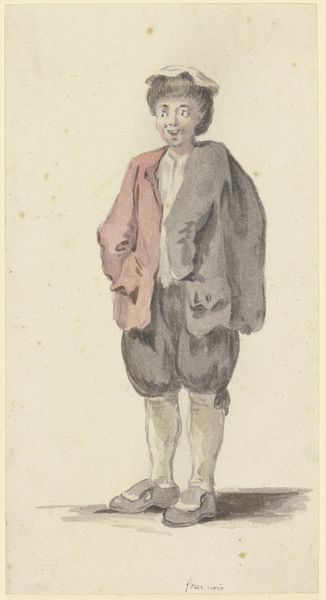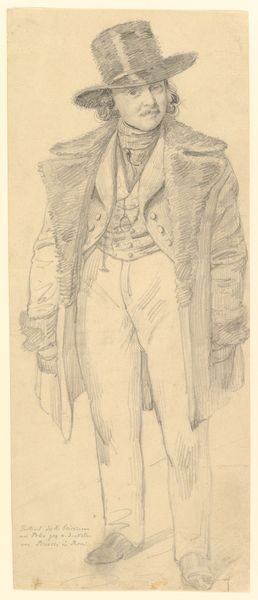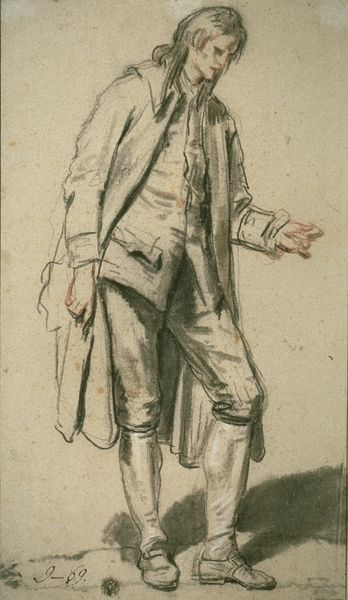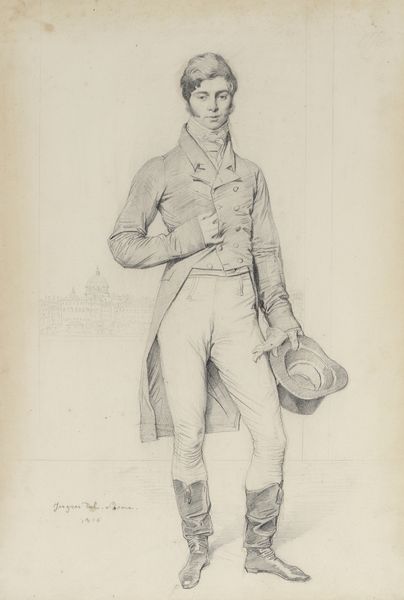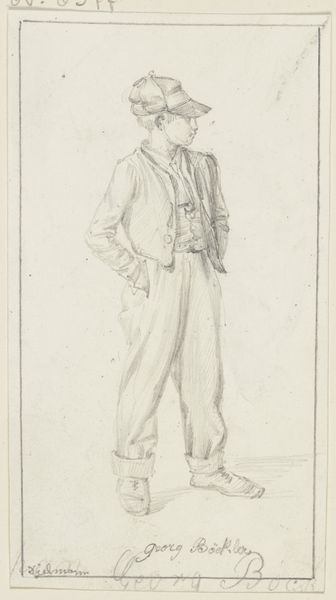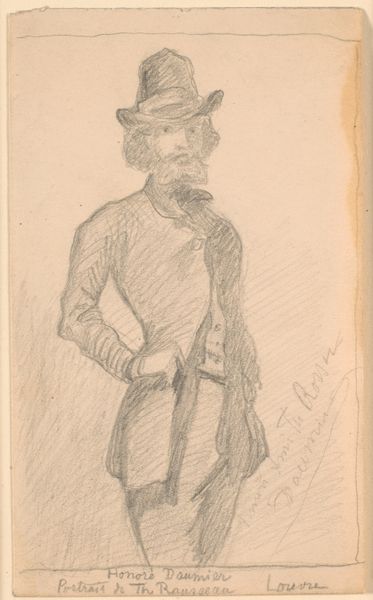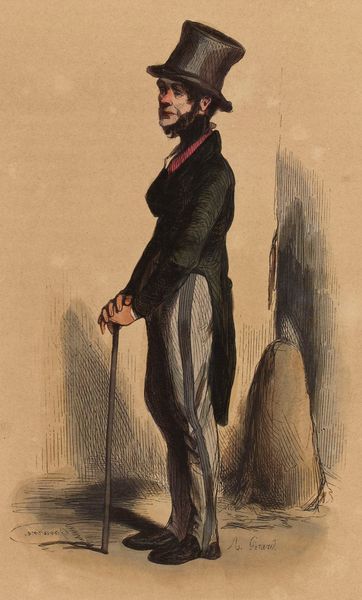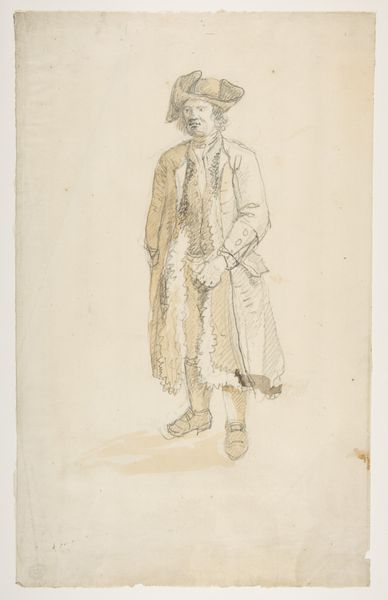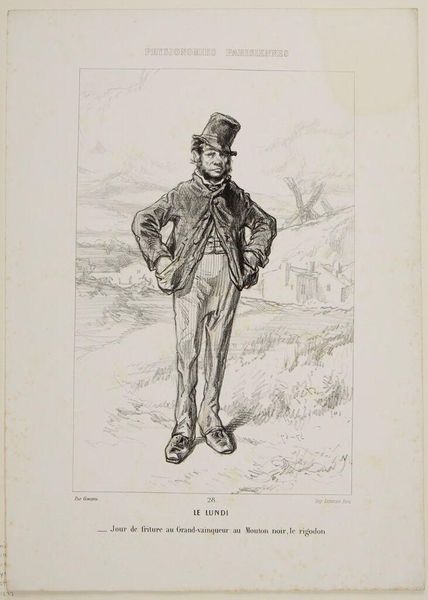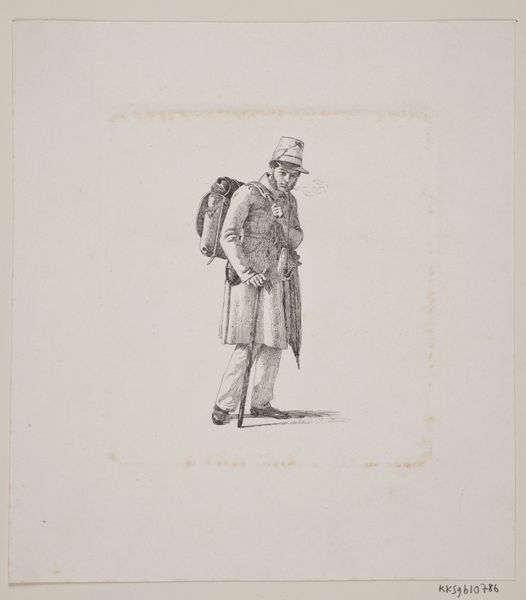
drawing, mixed-media, print, paper, ink, graphite, pen
#
portrait
#
drawing
#
mixed-media
# print
#
charcoal drawing
#
paper
#
ink
#
pencil drawing
#
romanticism
#
france
#
graphite
#
pen
#
portrait drawing
Dimensions: 301 × 191 mm
Copyright: Public Domain
Curator: What strikes you first about this image? Its mood, perhaps? Editor: A certain dapper melancholy. It’s a bit washed out in tone but beautifully composed; a symphony of greys and browns creating a subtly serious effect. Curator: We're looking at "S. Terrason", a mixed-media piece made around 1849 by Auguste Raffet. It employs pen, ink, graphite, and charcoal on paper. This portrait captures the cultural essence of mid-19th century France through the visual language of Romanticism. Tell me, what aspects of this portrait reflect that specific historical or social narrative? Editor: The slightly languid pose, the wistful expression, the formal yet subtly relaxed attire. All contribute to the Romantic ideal of the individual—set apart by their sensitivity. Consider the placement of his hand; the slight contrapposto adds depth. Curator: His almost world-weary expression definitely hints at the Byronic hero archetype—someone marked by destiny or carrying a burden, all of which resonate in the symbolism attached to this image. His buttoned coat can represent composure while still expressing emotions through nonverbal cues, as evidenced by the slight arch of his eyebrow. It’s all quite fascinating. Editor: True. The careful gradation of the shadows creates both volume and this inherent sense of pensiveness. Notice how Raffet uses cross-hatching to define the figure's form and impart the emotional state of the sitter, while also establishing texture—almost tactile. Curator: Precisely. Raffet was excellent in communicating through clothing styles and subtle symbols of that time—clothing as societal codifier, as the visual representation of class and occupation. I think viewers could connect to these figures because, just like us, these figures experienced a sense of place, an internal sense of identity, or perhaps a loss. Editor: I’m inclined to agree. "S. Terrason" presents a window into both personal and societal sensibilities during that era through a finely wrought visual aesthetic. Curator: Indeed. Raffet gives us both the structure and the spirit of an age through a single person. Editor: The work prompts an enduring engagement with not just who, but what they were.
Comments
No comments
Be the first to comment and join the conversation on the ultimate creative platform.
